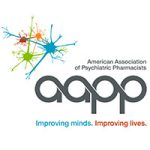Brand name: Qelbree® (KELL'-bree) — extended release
- Capsules: 100 mg, 200 mg
Generic name: Viloxazine hydrochloride
All FDA warnings are at the end of this fact sheet. Please consult them before taking this medication.
What is Qelbree® and what does it treat?
Viloxazine is a prescription medication that is used to treat individuals with attention-deficit hyperactivity disorder (ADHD).
Symptoms of ADHD interfere with an individual’s ability to function at school or work or in social settings and include:
- Inattention (e.g., making careless mistakes, losing things necessary for tasks)
- Hyperactivity (e.g., inability to sit still)
- Impulsivity (e.g., interrupting or intruding on others)
Hyperactivity is less common in adults. A person may have severe inattention without hyperactivity or impulsivity.
Viloxazine is used in addition to non-medication treatments to manage ADHD symptoms.
What is the most important information I should know about Qelbree®?
It may take several weeks before you notice the full benefits of this medication. It is important to continue taking viloxazine as directed, even if you do not notice immediate improvement.
Are there specific concerns about Qelbree® and pregnancy?
If you are planning on becoming pregnant, notify your health care provider to best manage your medications. People living with ADHD who wish to become pregnant face important decisions. Untreated ADHD has risks to the fetus as well as the mother. It is important to discuss the risks and benefits of treatment with your doctor and caregivers. Taking viloxazine while pregnant may cause fetal harm. According to the manufacturer, if pregnancy occurs during treatment, consider discontinuing viloxazine.
Regarding breastfeeding, caution is advised since it is not known if viloxazine passes into human breast milk.
What should I discuss with my health care provider before taking Qelbree®?
- Symptoms of your condition that bother you the most
- If you have thoughts of suicide or harming yourself
- If you experience side effects from your medications as some side effects pass with time, but others may require changes in the medication.
- Any other psychiatric or medical problems you have, including heart, liver or kidney disease.
- All other medications you are currently taking (including over the counter products, herbal and nutritional supplements) and any medication allergies you have
- Other non-medication treatment you are receiving, such as talk therapy or substance abuse treatment. Your provider can explain how these different treatments work with the medication.
- If you are pregnant, plan to become pregnant, or are breastfeeding
- If you drink alcohol or use drugs
How should I take Qelbree®?
Viloxazine is usually taken one time per day with or without food.
The dose usually ranges from 100mg to 200mg. Only your health care provider can determine the correct dose for you.
This medication should not be crushed, chewed, or divided. Swallow capsules whole or open and sprinkle all of the contents on a teaspoonful of applesauce and eat without chewing within 2 hours. Do no store the mixture for future use.
Use a calendar, pillbox, alarm clock, or cell phone alert to help you remember to take your medication. You may also ask a family member or friend to remind you or check in with you to be sure you are taking you medication.
What happens if I miss a dose of Qelbree®?
If you miss a dose of viloxazine, take it as soon as you remember, unless it is closer to the time of your next dose. Discuss this with your health care provider. Do not double your next dose or take more than what is prescribed.
What should I avoid while taking Qelbree®?
Avoid drinking alcohol or using illegal drugs while you are taking this medication. They may decrease the benefits (e.g., worsen your condition) and increase adverse effects (e.g., sedation) of the medication.
What happens if I overdose with Qelbree®?
If an overdose occurs call your doctor or 911. You may need urgent medical care. You may also contact the poison control center at 1-800-222-1222.
A specific treatment to reverse the effects of viloxazine does not exist.
What are the possible side effects of Qelbree®?
Common side effects
- Increased heart rate and blood pressure
- Feeling sleepy, sluggish or weak during the day, trouble sleeping at night
- Headache
Rare side effects
- Decreased appetite, stomach pain, upset stomach, nausea, vomiting
- Irritability, changes in mood
- Upper respiratory tract infection
Serious side effects
- Cardiovascular effects, increased suicidal thoughts
Are there any risks for taking Qelbree® for long periods of time?
There are no known problems associated with long term use of Qelbree®.
What other medications interact with Qelbree®?
Viloxazine should not be taken with or within 2 weeks of monoamine oxidase inhibitors (MAOIs), which are usually used to treat depression. These include phenelzine (Nardil®), tranylcypromine (Parnate®), selegiline (EMSAM®), and isocarboxazid (Marplan®). The antibiotic linezolid (Zyvox®) should be avoided as well because it may act similar to a MAOI. Taking viloxazine with or within 2 weeks of MAOIs drugs similar to MAOIs can result in dangerously high blood pressure that can lead to death.
Medications for asthma/difficulty breathing (e.g., albuterol) can increase the risk of high blood pressure and rapid heart rate (tachycardia) when taking viloxazine.
Because of viloxazine’s possible effect on blood pressure it should be used cautiously with other medications that increase or decrease blood pressure.
Viloxazine may increase the levels and effects of alosetron, clozapine, duloxetine, melatonin, pimozide, pirfenidone, ramelteon, tasimelteon, theophylline and tizanidine.
How long does it take for Qelbree® to work?
It may take 4 – 8 weeks to get the maximum benefit once the right dose is determined. However, improvements in some symptoms may occur sooner.
Summary of Black Box Warnings
Suicidal Thoughts or Actions in Children, Teens, and Young Adults
- Depression and certain other psychiatric disorders are themselves associated with increases in the risk of suicide.
- In short-term studies, viloxazine increased the risk of suicidality in children, adolescents, and young adults when compared to placebo.
- Patients should be closely monitored for suicidality (suicidal thinking and behavior), worsening of symptoms, or changes in behavior especially when viloxazine is first started or the dose is increased.
- Families and caregivers should be advised of the need for close observation and communication with the prescriber if any of these signs are seen.
Last Reviewed: January 2024
Provided by

Important Disclosure: This information is being provided as a community outreach effort of the American Association of Psychiatric Pharmacists. This information is for educational and informational purposes only and is not medical advice. This information contains a summary of important points and is not an exhaustive review of information about the medication. Always seek the advice of a physician or other qualified medical professional with any questions you may have regarding medications or medical conditions. Never delay seeking professional medical advice or disregard medical professional advice as a result of any information provided herein. The American Association of Psychiatric Pharmacists disclaims any and all liability alleged as a result of the information provided herein.
©2023 The American Association of Psychiatric Pharmacists (AAPP) and the National Alliance on Mental Illness (NAMI). AAPP and NAMI make this document available under the Creative Commons Attribution-NoDerivatives 4.0 International License. Last Updated: January 2016.

